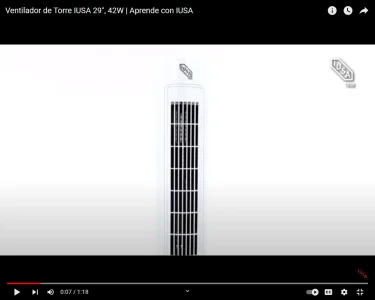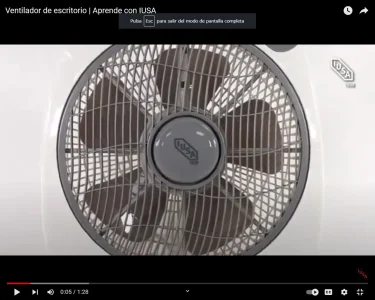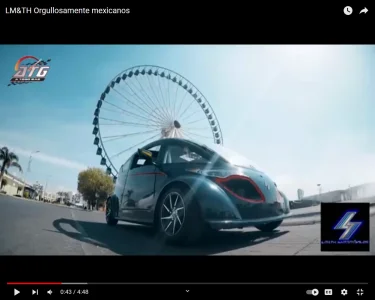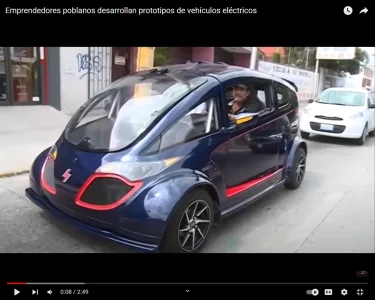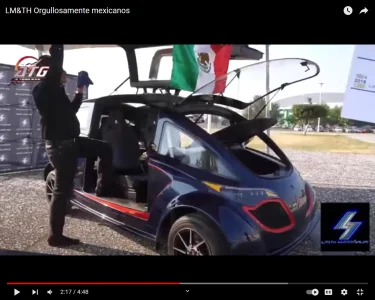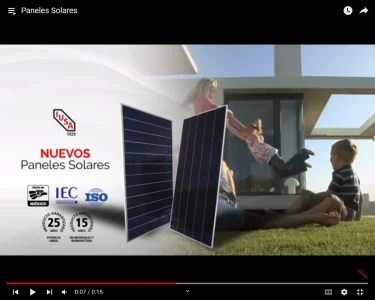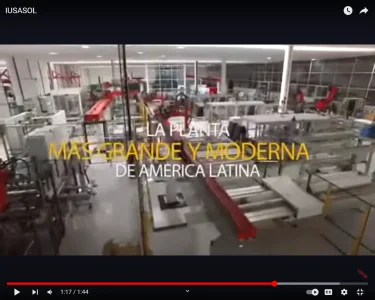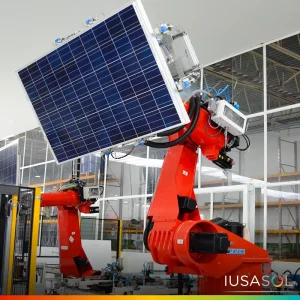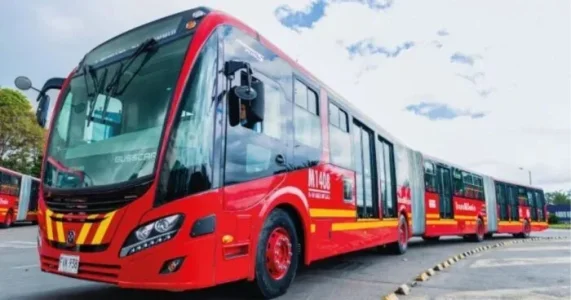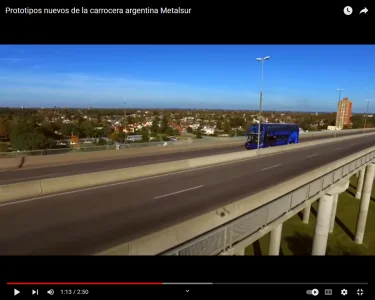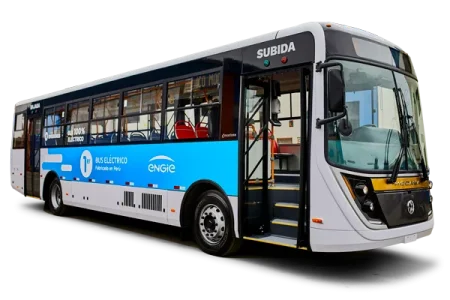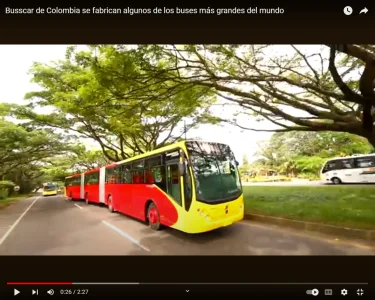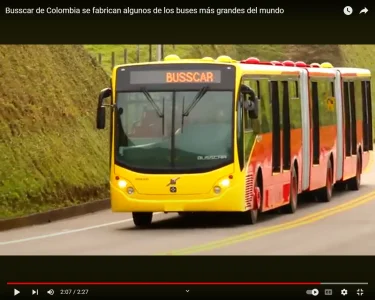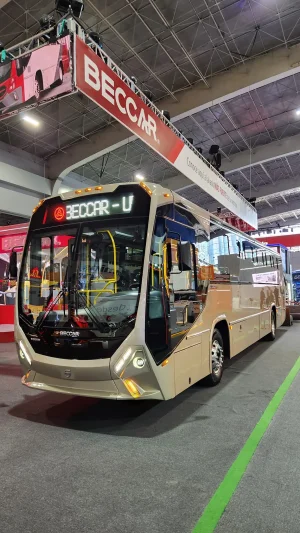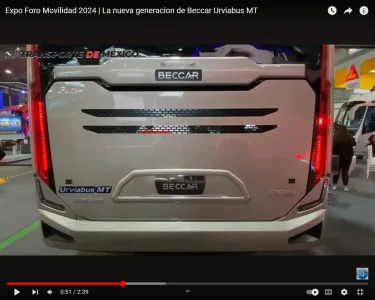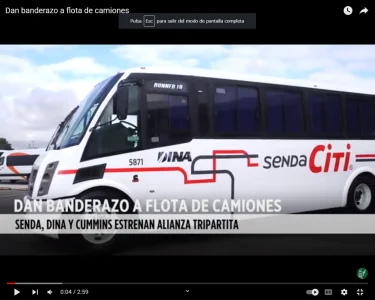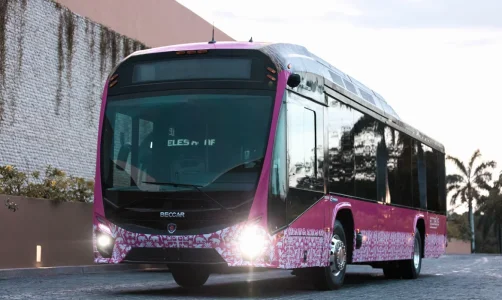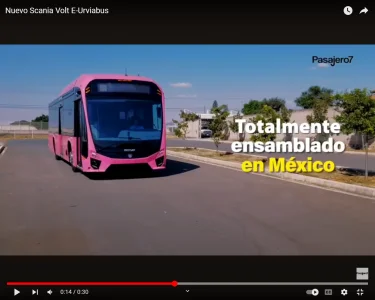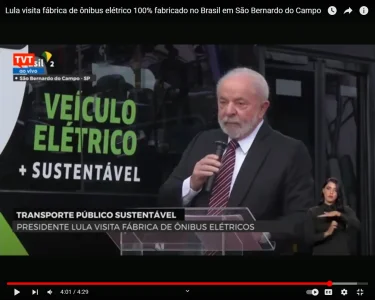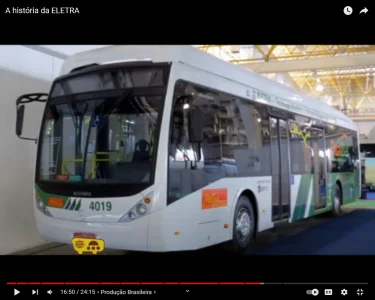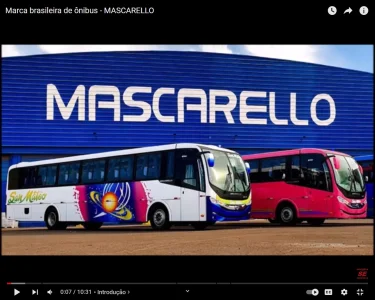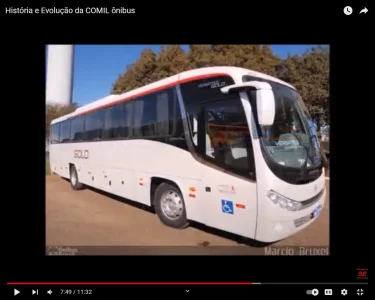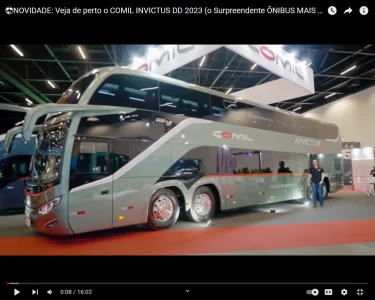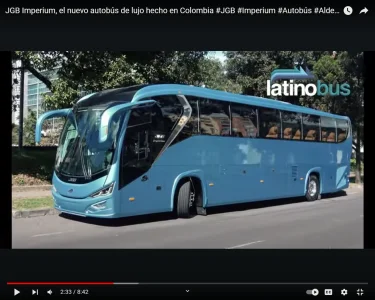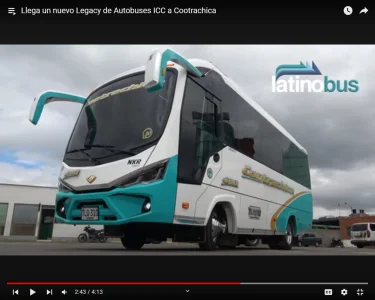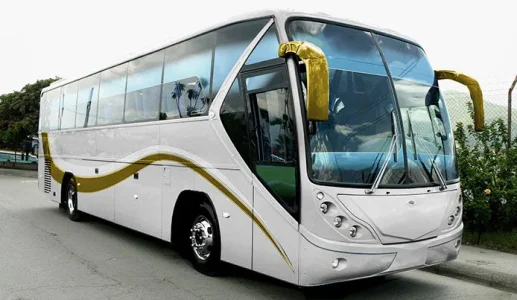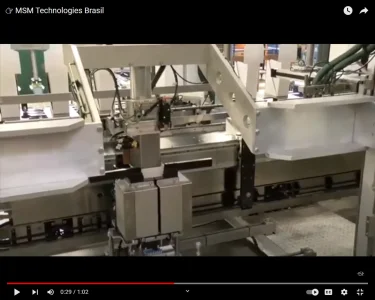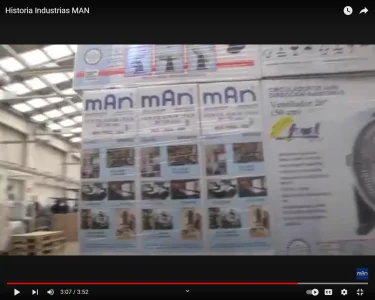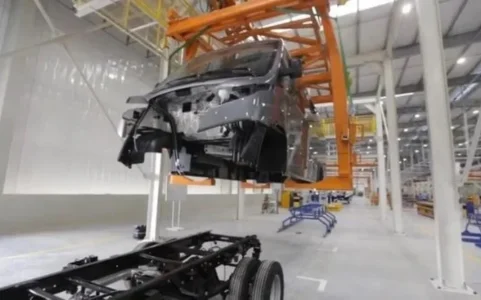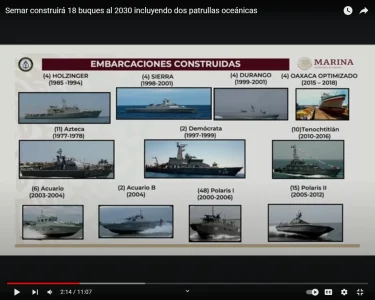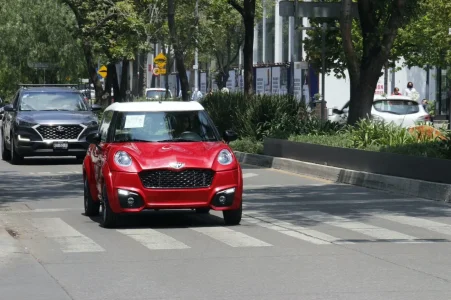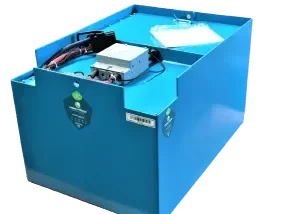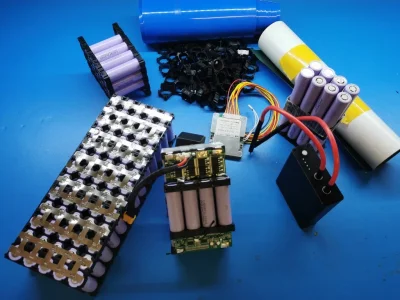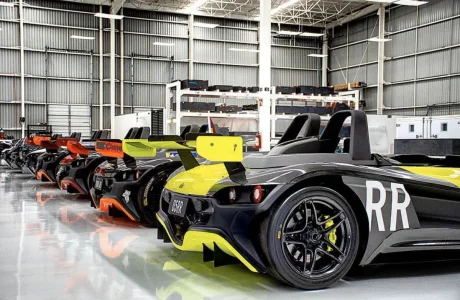The first ship of Promef, Transpetro's Fleet Modernization and Expansion Program, will be launched this Friday (5/7). The ceremony, at the Atlântico Sul Shipyard in Pernambuco, will be attended by President Lula. The vessel is two hundred and seventy-four meters long and has the capacity to transport one million barrels of oil.
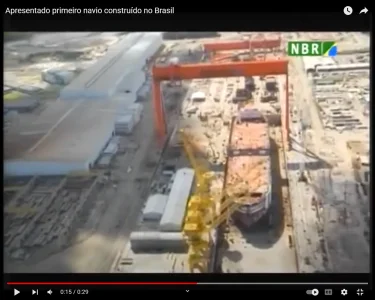
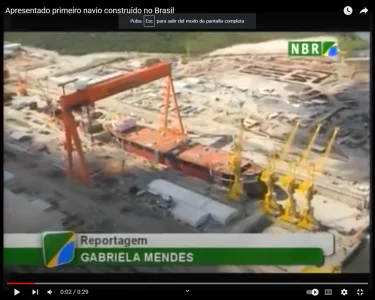 View: https://www.youtube.com/watch?v=zpHFdin8_i4&t=6s
View: https://www.youtube.com/watch?v=zpHFdin8_i4&t=6s
Revolutionizing Brazilian technology and the naval industry, the Submarine Development Program (PROSUB) represents a significant technological advancement in the country, based on intellectual capital, sensitive engineering and cutting-edge technology, in addition to encouraging defense policy, boosting personnel training and strengthening national sovereignty. An important advancement of PROSUB was the Submarine Weapons Show (S40) “Riachuelo”, held on September 1, 2022, in the municipality of Itaguaí (RJ).
The “Riachuelo” is the first in a class of four conventional diesel-electric submarines, which will provide greater deterrent power in the 5.7 million km² of the Blue Amazon, whose rich waters, seabed and subsoil are important for economic, scientific and environmental development. It is in this maritime area that Brazilians develop fishing activities, through which 95% of Brazilian foreign trade passes and where biological and mineral resources are explored.
To protect this heritage and guarantee Brazilian sovereignty at sea, the Brazilian Navy (MB) is investing in expanding its naval force, such as the S40, an important element of surprise that is essential for denying enemy vessels access to national territory, increasing the deterrent power of the Brazilian Armed Forces. To achieve this effect, this type of ship relies on its particular characteristics, notably its ability to conceal itself and its ability to cause damage to opposing naval forces.
Present at the event, the Minister of Defense, Paulo Sérgio Nogueira de Oliveira, highlighted that Brazilian history shows the participation of the MB in several decisive moments in the formation of Brazilian nationality and that the delivery of the new naval vehicle built in Brazil allows for increased defense capacity in the maritime area known as the Blue Amazon. “The Submarine Development Program is of strategic importance to the country. The construction of these new submarines under PROSUB fulfills two major objectives: improving the operational capacity of our Navy by significantly increasing its deterrent power and expanding the protection of its jurisdictional waters, achieving a more effective presence in the South Atlantic, and also increasing our naval industry and developing new technologies, contributing to the development of the national economy by creating thousands of direct and indirect jobs.”
The Commander of the Navy, Admiral Almir Garnier Santos, emphasized that “Riachuelo represents an investment for Brazilian society, in sovereignty, in the wealth of the Brazilian people. More than 20,000 direct jobs and around 40,000 indirect jobs have already been created. Furthermore, the riches of our Blue Amazon are still incalculable. We are talking about something grand and extremely important for the future of our country.”
According to the Commander of Naval Operations, Admiral Marcos Sampaio Olsen, the Submarine Force now has a class of quieter and more lethal submarines, prepared to act in favor of guaranteeing the sovereignty of the Brazilian State. “Features such as high stealth rate, increased detection capacity and time spent in the patrol zone, in addition to precision and density in data acquisition in investigation and attack operations, make the arrival of the Submarine ‘Riachuelo’ one of the most anticipated moments in recent years”.
For the Commander of the Submarine “Riachuelo”, Frigate Captain Edson do Vale Freitas, “the operational capabilities of the S40 qualify it to reduce the control exercised by the opponent, facilitating the action of other forces. It also allows for mining, intelligence operations and rescue or infiltration of special operations elements in enemy waters”.
Revolutionizing Brazilian technology and the naval industry, the Submarine Development Program (PROSUB) represents a significant technological advancement in the country, based on intellectual capital, sensitive engineering and cutting-edge technology, in addition to encouraging defense policy, boosting personnel training and strengthening national sovereignty. An important advancement of PROSUB was the Submarine Weapons Show (S40) “Riachuelo”, held on September 1, 2022, in the municipality of Itaguaí (RJ).
The “Riachuelo” is the first in a class of four conventional diesel-electric submarines, which will provide greater deterrent power in the 5.7 million km² of the Blue Amazon, whose rich waters, seabed and subsoil are important for economic, scientific and environmental development. It is in this maritime area that Brazilians develop fishing activities, through which 95% of Brazilian foreign trade passes and where biological and mineral resources are explored.
To protect this heritage and guarantee Brazilian sovereignty at sea, the Brazilian Navy (MB) is investing in expanding its naval force, such as the S40, an important element of surprise that is essential for denying enemy vessels access to national territory, increasing the deterrent power of the Brazilian Armed Forces. To achieve this effect, this type of ship relies on its particular characteristics, notably its ability to conceal itself and its ability to cause damage to opposing naval forces.
Present at the event, the Minister of Defense, Paulo Sérgio Nogueira de Oliveira, highlighted that Brazilian history shows the participation of the MB in several decisive moments in the formation of Brazilian nationality and that the delivery of the new naval vehicle built in Brazil allows for increased defense capacity in the maritime area known as the Blue Amazon. “The Submarine Development Program is of strategic importance to the country. The construction of these new submarines under PROSUB fulfills two major objectives: improving the operational capacity of our Navy by significantly increasing its deterrent power and expanding the protection of its jurisdictional waters, achieving a more effective presence in the South Atlantic, and also increasing our naval industry and developing new technologies, contributing to the development of the national economy by creating thousands of direct and indirect jobs.”
The Commander of the Navy, Admiral Almir Garnier Santos, emphasized that “Riachuelo represents an investment for Brazilian society, in sovereignty, in the wealth of the Brazilian people. More than 20,000 direct jobs and around 40,000 indirect jobs have already been created. Furthermore, the riches of our Blue Amazon are still incalculable. We are talking about something grand and extremely important for the future of our country.”
According to the Commander of Naval Operations, Admiral Marcos Sampaio Olsen, the Submarine Force now has a class of quieter and more lethal submarines, prepared to act in favor of guaranteeing the sovereignty of the Brazilian State. “Features such as high stealth rate, increased detection capacity and time spent in the patrol zone, in addition to precision and density in data acquisition in investigation and attack operations, make the arrival of the Submarine ‘Riachuelo’ one of the most anticipated moments in recent years”.
For the Commander of the Submarine “Riachuelo”, Frigate Captain Edson do Vale Freitas, “the operational capabilities of the S40 qualify it to reduce the control exercised by the opponent, facilitating the action of other forces. It also allows for mining, intelligence operations and rescue or infiltration of special operations elements in enemy waters”.
“Riachuelo” Class Submarines
Due to their various technologies and innovations, the “Riachuelo” Class submarines (S-BR) are more versatile than the “Tupi” Class submarines (“Tupi”, “Tamoio”, “Timbira” and “Tapajó”) and are considered operationally superior to several submarines currently available in the world.
They have advanced sensors - such as a set of sonars and periscopes with night vision cameras -, in addition to a combat management system equipped with modern and complex algorithms, which allow the submarine to detect and classify targets at long distances. The S-BRs also have greater autonomy than their “Scorpène” Class predecessor, due to a change in the design that included an intermediate section to increase accommodation and water tanks.
Through a technology transfer process, the construction of the S-BRs is being carried out by Brazilian labor (engineers and technicians) with technical assistance from French companies from the Naval Group. The Nationalization Program has already qualified around forty Brazilian companies for manufacturing
“Riachuelo” Class Submarines
Due to their various technologies and innovations, the “Riachuelo” Class submarines (S-BR) are more versatile than the “Tupi” Class submarines (“Tupi”, “Tamoio”, “Timbira” and “Tapajó”) and are considered operationally superior to several submarines currently available in the world.
They have advanced sensors - such as a set of sonars and periscopes with night vision cameras -, in addition to a combat management system equipped with modern and complex algorithms, which allow the submarine to detect and classify targets at long distances. The S-BRs also have greater autonomy than their “Scorpène” Class predecessor, due to a change in the design that included an intermediate section to increase accommodation and water tanks.
Through a technology transfer process, the construction of the S-BRs is being carried out by Brazilian labor (engineers and technicians) with technical assistance from French companies from the Naval Group. The Nationalization Program has already qualified around forty Brazilian companies for manufacturing

www.mar.mil.br
Meet the Humaitá, Brazil's new submarine that can remain submerged at sea for up to five days
The vessel is part of the PROSUB program, budgeted at R$37.1 billion and which includes a nuclear propulsion model
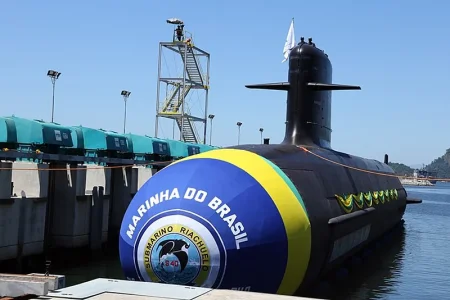
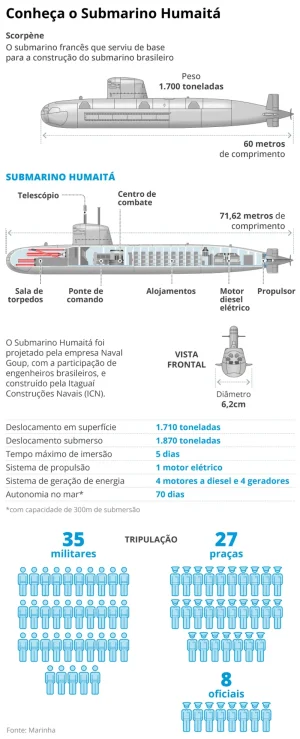
Embarcação faz parte do programa PROSUB, orçado em R$ 37,1 bilhões e que prevê modelo de propulsão nuclear

oglobo.globo.com
